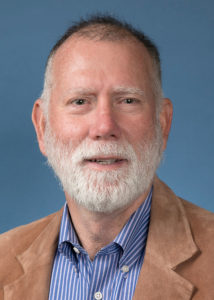
Bern J Galvin
A fractional CFO (Chief Financial Officer) working in the greater Los Angeles, CA region
My Bio
I’m the son of a dirt farmer from central western New South Wales, Australia.
I have over thirty years of corporate finance and management experience, including Turnaround Specialist, General Manager, CEO, CFO, Vice President of Finance, Controller and Treasurer. In addition to full P&L responsibility for companies, their divisions and subsidiaries, I have provided consulting services to stakeholders of organizations that are under-performing, transitional, in an out-of-court workout mode, or Chapter proceeding.
These services have included viability analysis, organizational restructuring, liquidation analysis, due diligence in acquisition situations, expert witness testimony, collateral evaluation and results monitoring. Stakeholders to whom services have been rendered include commercial banks, unsecured creditor groups, and the owners and management of under-performing companies, and non-profit organizations. Much of my turnaround experience was gained in the 90′s in the wake of the recession that began in 1989.
For several years I focused on start-ups, helping found and finance several companies primarily, though not exclusively, in the technology sector. I’ve enjoyed considerable success with early stage start-ups despite the inherent volatility in this space.
I provide ‘fractional CFO’, and consulting services to clients, comprised primarily of small to medium sized closely held businesses involved in such things as professional services, international trade, medical services, and manufacturing, and to a growing list of non-profits. These services, in addition to all the normal CFO type services, have included negotiation for the purchase and sale of businesses or divisions thereof, design and implementation of financial and management control systems, financial modeling, project management, product development and business expansion advice.
A few years ago I founded a natural organic beverage company. Bucha live kombucha, a good tasting kombucha, began in my kitchen as a result of my dissatisfaction with the then available commercial kombuchas. Bucha quickly became a national brand sold in many places in the US through Whole Foods, Kroger, Vons/Safeway and Costco, and throughout Canada and several other countries. I sold my interest soon after the company’s stock became publicly traded on NASDAQ.
I’ve done quite a lot of capital formation and capital structuring work, primarily for startups but also increasingly for established companies that have gained a commercial foothold but raised most of their capital without sufficient regard to the securities laws. These companies often have a need for additional expansion capital and have exhausted their ‘friends & family’ capital sources, necessitating them to approach professional investors. Before they can access this more sophisticated capital – they usually want to raise capital using the Reg. D safe harbor exemption to registration – their existing capital structure has to be revised and they have to be brought into compliance with the securities laws. I assist them in working through this process. As part of this I’ve become a ‘one-stop PPM shop’, penning business plans, assembling multi-year financial projection models, negotiating the terms of the Series A Share Purchase Agreement and then writing the Agreement itself, generating the pitch decks, cap tables, and due diligence documents.
I attended college on a Commonwealth academic scholarship graduating from the University of NSW in Sydney, Australia with degrees in Finance and Law. I was admitted to practice law, though I never have, as a Barrister of the Supreme Court of NSW in 1979.
I’m a native of Australia, a US Citizen, and I live in Oxnard in southern California.
Over the years I’ve served on many Boards of Directors, primarily for non-profit organizations. These days, because of the potential for conflict with my fractional CFO non-profit clients, I politely decline Board positions.
Overview
Occupation
Fractional CFO, corporate turnaround, serial/sometime entrepreneur
Residence
Oxnard, CA
berngalvin2@gmail.com
Telephone
310.962.6497
Residency Status
American Citizen (naturalized) & Australian Citizen
Covid Status
Fully Vaccinated (Moderna and Phizer)
Articles & Podcasts
Some articles I've written, relating mainly to my philanthropic work -
Podcasts I've participated in -
Education
University of New South Wales, Sydney, Australia
1972 - 1978
B. Com - Accounting/Finance major
LL. B - Business Law/Securities
Commonwealth University Academic Scholarship Recipient